Trump's boat strikes: the war that isn't a war
A century of futility
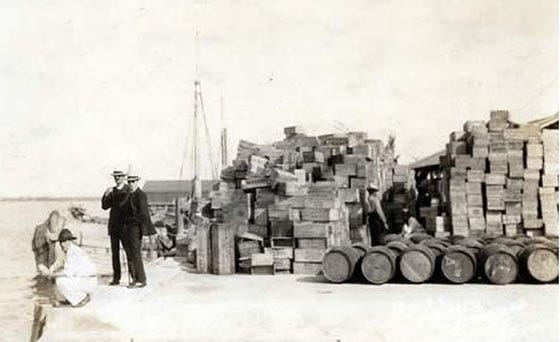
The constitutional amendment that banned the making and selling of “intoxicating liquors” in the United States beginning in 1920 had an unintended side-effect: It completely transformed two islands in the Atlantic.
Nassau, the British colonial port in the Bahamas, was flooded with drink intended for illegal sale in the U.S. — its imports of Scotch whisky, for example, increased by 421% — and it reaped a fortune in tariffs on the alcohol trade. The tiny French island of St. Pierre, a sleepy fishing community off the coast of Newfoundland, charged a much lower duty and also prospered, turning over as many as six million bottles of booze a year.
The islands became nodes in a vast bootlegging network that slaked the thirst of Americans deprived of legal beer, wine and hard liquor. As Daniel Okrent relates in Last Call, his captivating history of Prohibition, “by 1923, from the Gulf of Maine to the tip of Florida, an enormous fleet of old freighters, tramp steamers, converted submarine chasers, and ships of various other descriptions — ‘anything with a bottom that could float and a hold that could be filled with booze,’ [bootlegger Bill] McCoy said — lay at permanent anchor, just outside the three-mile limit.”
The “rumrunners” filled their holds in Nassau, “offloaded their goods onto the Rum Row ships and raced back south to pick up another shipment.” Meanwhile, “Small boats of every imaginable description would dash out to The Row, usually under cover of night, load up, then hurry back to shore.”
To serve this new industry, a boatyard in Freeport on Long Island built three 42-foot boats for bootlegger Dutch Schultz, “each one equipped with three Packard Liberator 500-horsepower air-cooled engines, bulletproof gas tanks, and room for 600 cases of liquor.”
It took only a few years after the start of Prohibition for bootleggers to devise this enormously lucrative system to keep Americans drinking alcohol. It was one of many workarounds that flourished for 13 years, until the 18th Amendment was repealed.
Okrent chronicled the schemes that took advantage of Prohibition’s loopholes. These included the brisk trade in “sacramental wines” supposedly intended for religious organizations, the abuse of the rules allowing Americans to make wines or beer for their personal use, the gargantuan flow of liquor from Canada’s city of Windsor to Detroit (which historian Larry Engelmann called the “City on a Still”), the tens of thousands of speakeasies, the huge payoffs to police and federal agents.

Prohibition not only made mobster Al Capone a cult figure, but gave rise to a national “Commission” of organized crime bosses. The American experiment with enforced sobriety “encouraged criminality and institutionalized hypocrisy,” wrote Okrent. “It fostered a culture of bribery, blackmail and official corruption. It also maimed and murdered…”
What Prohibition didn’t do was to teach America a lesson.
The phony wars
Instead, Prohibition became a template for all the “wars” on drugs declared by US presidents and bureaucrats over the past 90 years.
President Herbert Hoover had made some efforts to ramp up enforcement of Prohibition, even toying with the idea of sending the Army or Marine Corps to crack down on bootlegging in Detroit, and he ordered federal agents to do what Chicago authorities wouldn’t or couldn’t: lock up Al Capone. But his lasting contribution to the cause of fighting substance abuse was to appoint Harry Anslinger as director of the Federal Bureau of Narcotics.
Anslinger led the agency for 32 years and not only enforced the law regulating the sale of narcotics such as opium and cocaine but targeted marijuana, which many doctors believed was not nearly as harmful.
“American youth is jeopardized by the weed,” Anslinger wrote. “Those who are lured into use of marihuana [are] destined to be transformed into moral and mental degenerates — some raving maniacs, others violent criminals.”
President Richard M. Nixon declared drug abuse “public enemy number one” in 1971. Ronald Reagan started his own war on drugs in the 1980s. Bill Clinton sought and obtained a harsh bill that locked up drug users and sellers for long prison terms.
And now President Donald Trump has turned the full resources of the U. S. military against alleged and unnamed drug traffickers plying the waters off Venezeula and the Eastern Pacific in small boats. While many aspects of the campaign track with the earlier “wars” on drugs, there are some unprecedented features to the new Pentagon policy.
For one thing, the people on the boats being blasted out of the water by U.S. drones are being denied even a pretense of the due process U.S. law gives to suspected criminals. “Judge, jury and executioner,” would be an apt way of characterizing those in the military who have to pull the trigger.
For another, there is no explanation of how the boats and those aboard are being chosen as targets.
As Politico’s Leo Shane III reported,
Defense Department officials do not know precisely who they have killed in multiple military strikes against alleged drug smuggling boats in the Caribbean that have claimed the lives of at least 57 people, according to Democratic lawmakers who attended a classified House briefing on the issue Thursday.
Shane also noted, “While White House officials have repeatedly referenced the threat posed by fentanyl being smuggled into the United States — it accounted for roughly 70 percent of overdose deaths nationwide in 2023, according to the National Institute on Drug Abuse — officials at Thursday’s briefing said the boats hit so far were primarily transporting cocaine.”
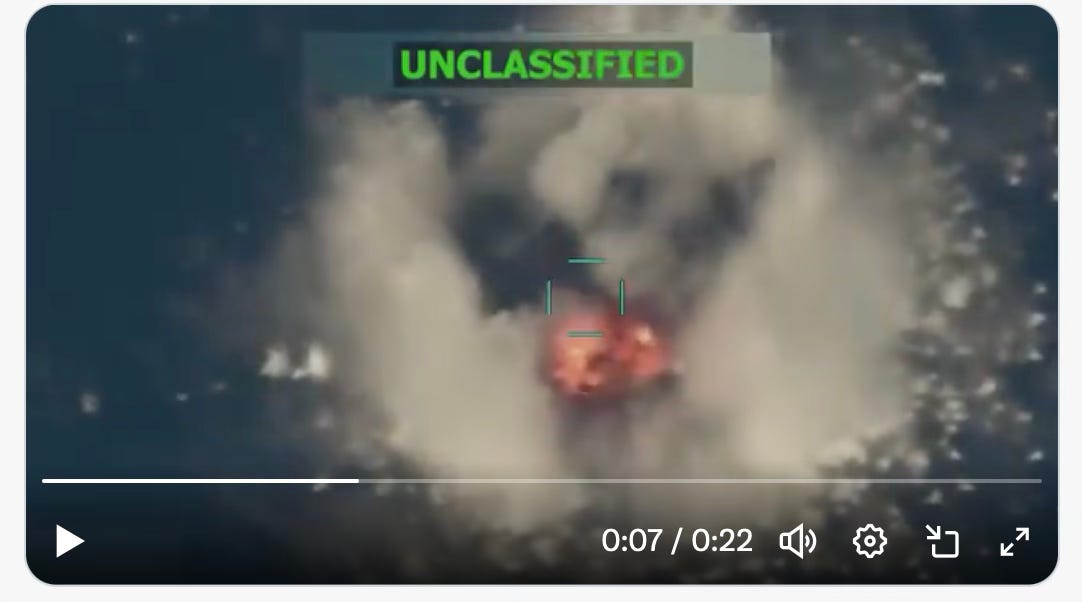
In many ways, the latest strikes follow a pattern. They are being ordered by a president who wants to project strength, fight crime and put his political opponents at a disadvantage.
Trump gave Congress notice of his anti-drug air strikes on September 4, starting the 60-day clock stipulated by the War Powers Act. As The Washington Post reported. “the 60-day window closes Monday,” November 3, but the administration now says this campaign isn’t subject to the War Powers Act because U.S. troops aren’t at risk given the use of drones. (Here’s my look at the history of the War Powers Act: The man who tried to rein in presidential war powers.)
Experts in the law of war have asserted that the U.S. strikes are illegal. Defense Secretary Pete Hegseth defended them, saying on X Friday, “These narco-terrorists are bringing drugs to our shores to poison Americans at home—and they will not succeed. The Department will treat them EXACTLY how we treated Al-Qaeda. We will continue to track them, map them, hunt them, and kill them.”
‘Rum War’
At the distance of a century, the idea of rumrunning has a romantic ring, but it was a serious and sometimes deadly business. The anemic U.S. Coast Guard was ordered to fight the illegal liquor trade; its budget and staffing doubled as a result. Officials commissioned a new fleet of fast picket boats and cutters and set up aerial patrols, using amphibious planes. It created a “Cryptanalytic Unit” to decode thousands of messages exchanged by the bootleggers.
On August 7, 1927, a Coast Guard ship monitoring traffic between Fort Lauderdale and the Bahamas intercepted a smuggler’s motorboat. As Craig Collins wrote,
One of the boat’s two occupants, Horace Alderman, somehow managed to bring a gun with him as he was brought aboard the cutter, and he opened fire, killing Boatswain Sidney Sanderlin, Motor Machinist’s Mate Victor Lamby, and a Secret Service agent, Robert Webster. Alderman was subdued by the rest of the crew, tried, convicted of three counts of murder and piracy on the high seas, and sentenced to death. He was hanged in a seaplane hangar at Coast Guard Base 6 at Fort Lauderdale two years later — the only person ever executed on Coast Guard property, and the only person ever executed by the federal government for a Prohibition-related crime.
The ordinary penalties were considerably lighter. First-time violators of the Volstead Act, which established the legal framework of Prohibition, faced a fine up to $1,000 and a maximum one-year prison term.
When it became clear that the law was being massively violated, the U.S. extended its territorial limit at sea from 3 to 12 miles. Congress passed the Jones Act, which made first offenses felonies rather than misdemeanors and increased the maximum fine to $10,000 and the maximum prison term to five years.
The scale of law-breaking flooded the courts — roughly two-thirds of the nearly one million prosecutions in federal court from 1921 through 1933 involved Prohibition violations. Emory Buckner, the U.S. Attorney for the Southern District in New York, was overwhelmed by the surge of arrests and discouraged by the futility of his efforts.
The parade of lawbreakers simply considered the fines they had to pay part of the cost of doing business.
“To call such proceedings ‘law-enforcement’ is a farce,” Buckner said. “To call such fines ‘convictions’ is grotesque.” As Okrent noted, Buckner “suggested that the notation on a defendant’s record should read ‘escaped on payment of money.’”
Nixon’s war
“In order to fight and defeat this enemy,” Richard Nixon told the nation on June 17, 1971, “it is necessary to wage a new, all-out offensive.”
A recently disclosed set of comments on a White House tape recording showed that by 1973, Nixon had doubts about part of his drug war. As The New York Times reported,
Speaking to a small group of aides and advisers at the White House in March 1973, Nixon said he knew that marijuana was “not particularly dangerous.”
Nixon, who had publicly argued that curbing drug use globally warranted an “all-out offensive,” also privately expressed unease about the harsh punishments Americans were facing for marijuana crimes. “Penalties should be commensurate with the crime,” Nixon said during that Oval Office conversation, calling a 30-year sentence in a case he recently had learned about “ridiculous.”
Nixon’s aide, John Ehrlichman, would later reveal the sordid thinking behind this war on drugs, which was launched as the nation remained divided over a real war, in Vietnam. In an interview in 1994, made public two decades later, Ehrlichman said:
The Nixon campaign in 1968, and the Nixon White House after that, had two enemies: the antiwar left and black people. You understand what I’m saying? We knew we couldn’t make it illegal to be either against the war or black, but by getting the public to associate the hippies with marijuana and blacks with heroin, and then criminalizing both heavily, we could disrupt those communities. We could arrest their leaders, raid their homes, break up their meetings, and vilify them night after night on the evening news. Did we know we were lying about the drugs? Of course we did.
This was in a long tradition. According to the nonprofit Vera Institute, “the United States has used drug laws to selectively target specific communities for more than a century. In the 1870s, anti-opium laws were aimed at Chinese immigrants. In the 1910s and 1920s, anti-cannabis laws introduced in the Midwest and Southwest targeted Mexican Americans and migrants.
Racism has remained a key component of anti-drug laws up until the present. The Center for American Progress reported in 2018:
Black Americans make up nearly 30 percent of all drug-related arrests, despite accounting for only 12.5 percent of all substance users. Black Americans are nearly six times more likely to be incarcerated for drug-related offenses than their white counterparts, despite equal substance usage rates. Almost 80 percent of people serving time for a federal drug offense are black or Latino.
As Michelle Alexander wrote in The New Jim Crow, when President Ronald Reagan announced his war on drugs in 1982, “less than 2 percent of the American public viewed drugs as the most important issue facing the nation. This fact was no deterrent to Reagan, for the drug war from the outset had little to do with public concern about drugs and much to do with public concern about race.”
Federal agencies vastly expanded spending on anti-drug law enforcement while the administration slashed funding on treatment, prevention and drug education. “Central to the media campaign,” Alexander noted, “was an effort to sensationalize the emergence of crack cocaine in inner-city neighborhoods—communities devastated by deindustrialization and skyrocketing unemployment.”
The 1986 Anti-Drug Abuse Act instituted mandatory minimum sentences for distributing cocaine, with “far more severe punishment for distribution of crack—associated with blacks—than powder cocaine, associated with whites,” Alexander observed. A law passed in 1988 stiffened penalties, and in 1992, “presidential candidate Bill Clinton vowed that he would never permit any Republican to be perceived as tougher on crime than he.” Clinton “escalated the drug war beyond what conservatives had imagined possible a decade earlier.”
Alexander summed up the consequences:
More than 2 million people found themselves behind bars at the turn of the twenty-first century, and millions more were relegated to the margins of mainstream society, banished to a political and social space not unlike Jim Crow, where discrimination in employment, housing and access to education was perfectly legal, and where they could be denied the right to vote.
The traffickers
The drug trade feeding the United States today is considerably more advanced than in the days of rumrunning. Smugglers use semisubmersible vessels and boats equipped with three or four outboards, enabling speeds as high as 70 miles an hour. As the Wall Street Journal reported, the “go-fast boats” carry “2 or 3 tons of cocaine. That is as much as $65 million in sales on the streets of Miami.”
Today’s drug-dealing network stretches much further than that of Rum Row. As the Journal noted, “Semisubmersible vessels carrying cocaine from Ecuador and Colombia are now known to have reached Australia. And the same kinds of narco-subs have taken cocaine east from South America and even the Amazon River in Brazil to Portugal and Spain.”
Clearly, as in the days of Prohibition, defying drug laws can yield huge profits. It follows that criminals will be tempted to brave the hazards of the smuggling journey, even if they include U.S. drones.
The drug users
The fact that presidents have cynically exploited the drug problem doesn’t mean that the United States doesn’t have a real problem. Data shows that drug overdoses have declined from the peak experienced during the Covid pandemic, but they remain near historically high levels, according to the CDC.
The biggest contributor to the increase in overdose deaths since 2015 is fentanyl, though deaths associated with methamphetamine and cocaine have also risen.
Trump has cited the deaths from fentanyl as a justification for tariffs against China, Canada and Mexico. He announced after his summit with China’s leader, Xi Jinping, that he was halving one set of tariffs because China had agreed to take steps to reduce the export of chemicals that are used in the making of fentanyl.
The real impact of the war on drugs
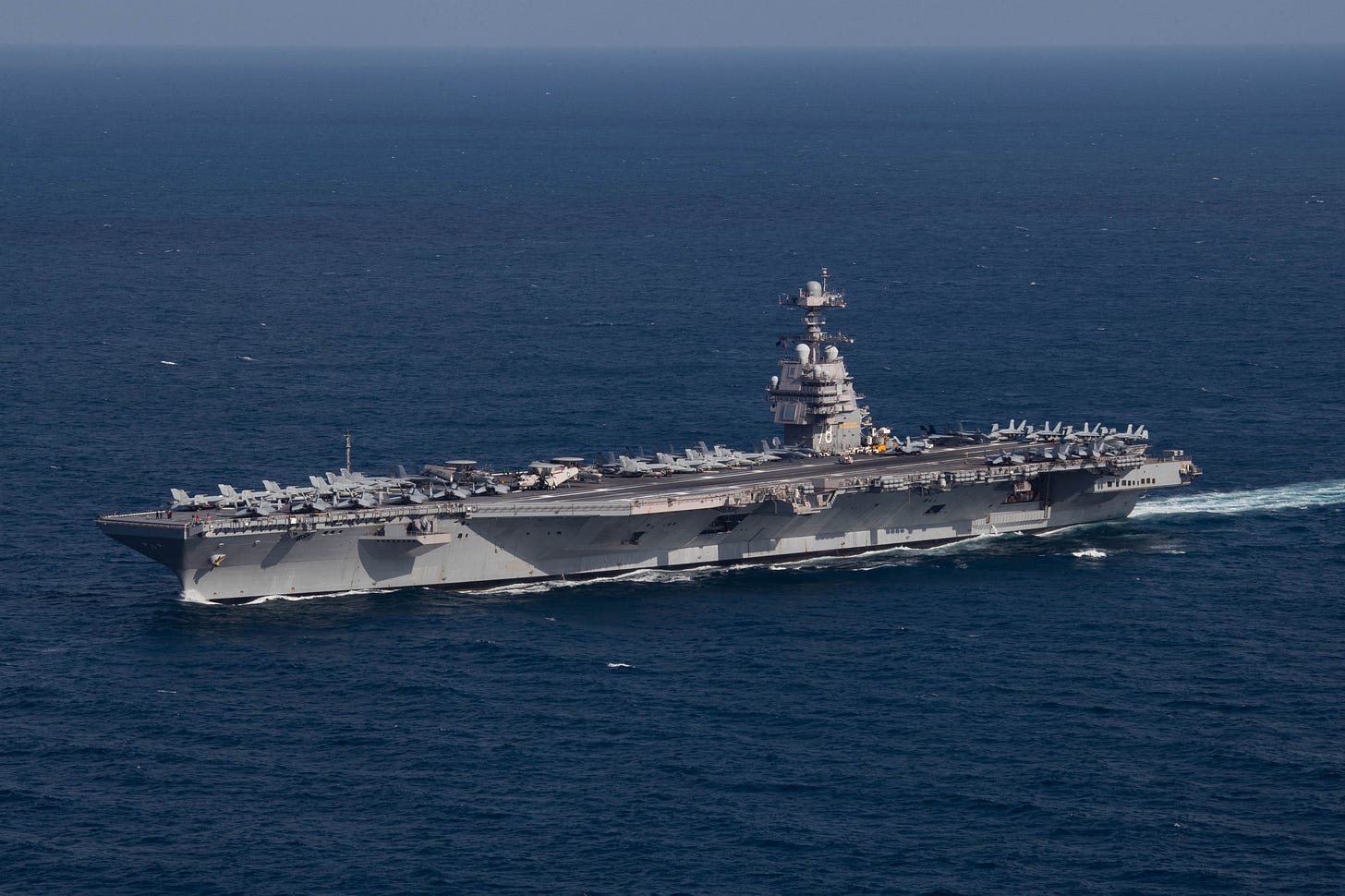
The ultimate impact of the latest campaign is fairly predictable. It won’t substantially diminish the appetite Americans have for the illegal drugs criminal gangs are providing. It won’t deal with the public health impact of illegal drug use, which is indeed killing a huge number of Americans. It won’t stop the corruption that helps enable the illegal drug trade to continue.
Declaring a war that is not really a war is irresistible for some presidents. It sounds dramatic, forceful and all-consuming even though in reality it isn’t anything like a real war. After all, a real war requires making unpopular decisions like mobilizing much of the economy and potentially drafting citizens into the military.
In a real war, as generals like to say, the “enemy gets a vote.” Fighting a war against another country launches a nation into an uncertain trajectory where counteroffensives happen and defeat is a real possibility.
In the boat strikes, there is no real chance of those being targeted winning the battle since they are not an army and lack the resources of a nation. They are no match for an armed force with a budget of $900 billion.
Pete Hegseth wants to call the Department of Defense the Department of War. The boat strikes give him a pretext for that name change.



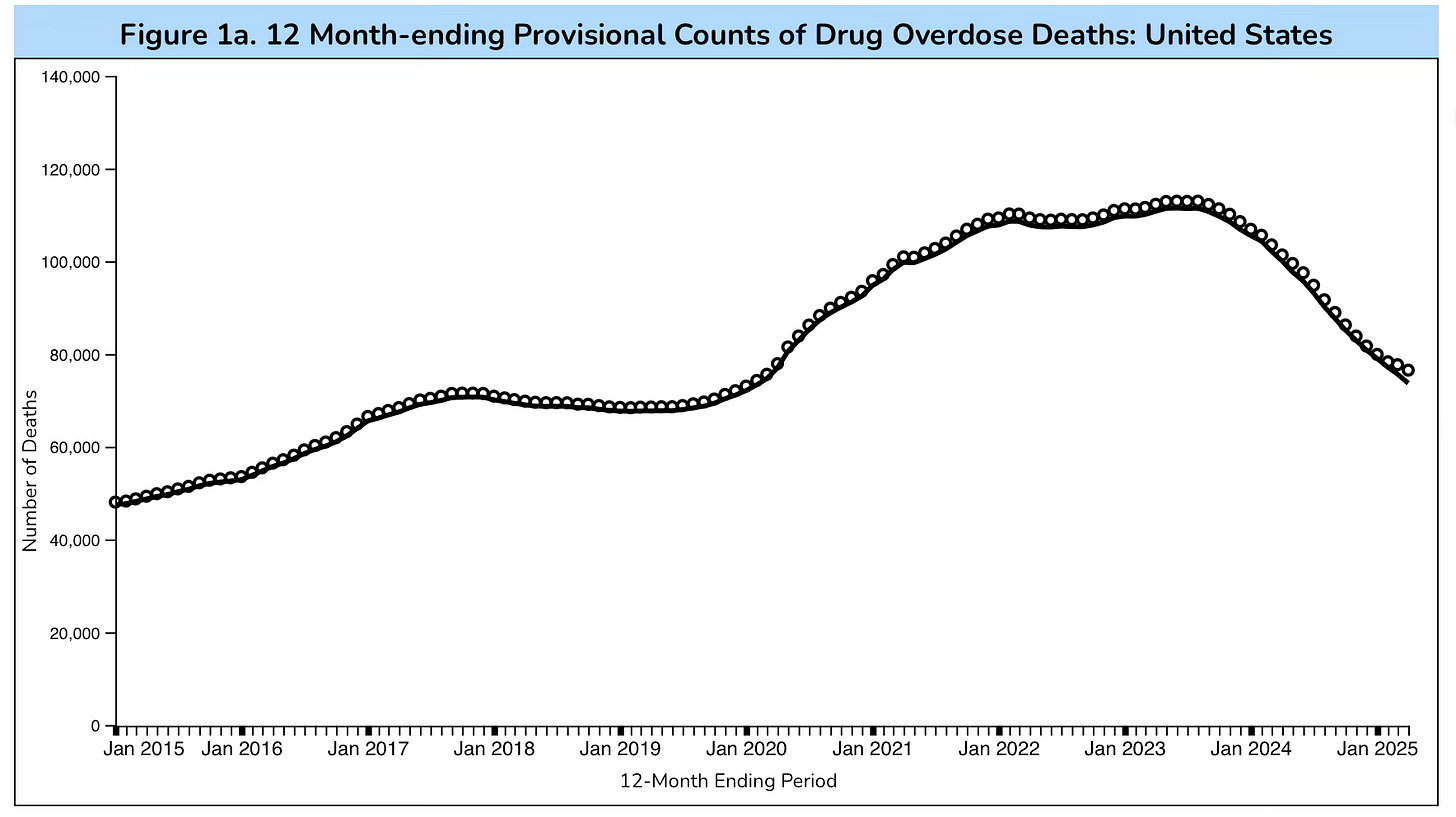
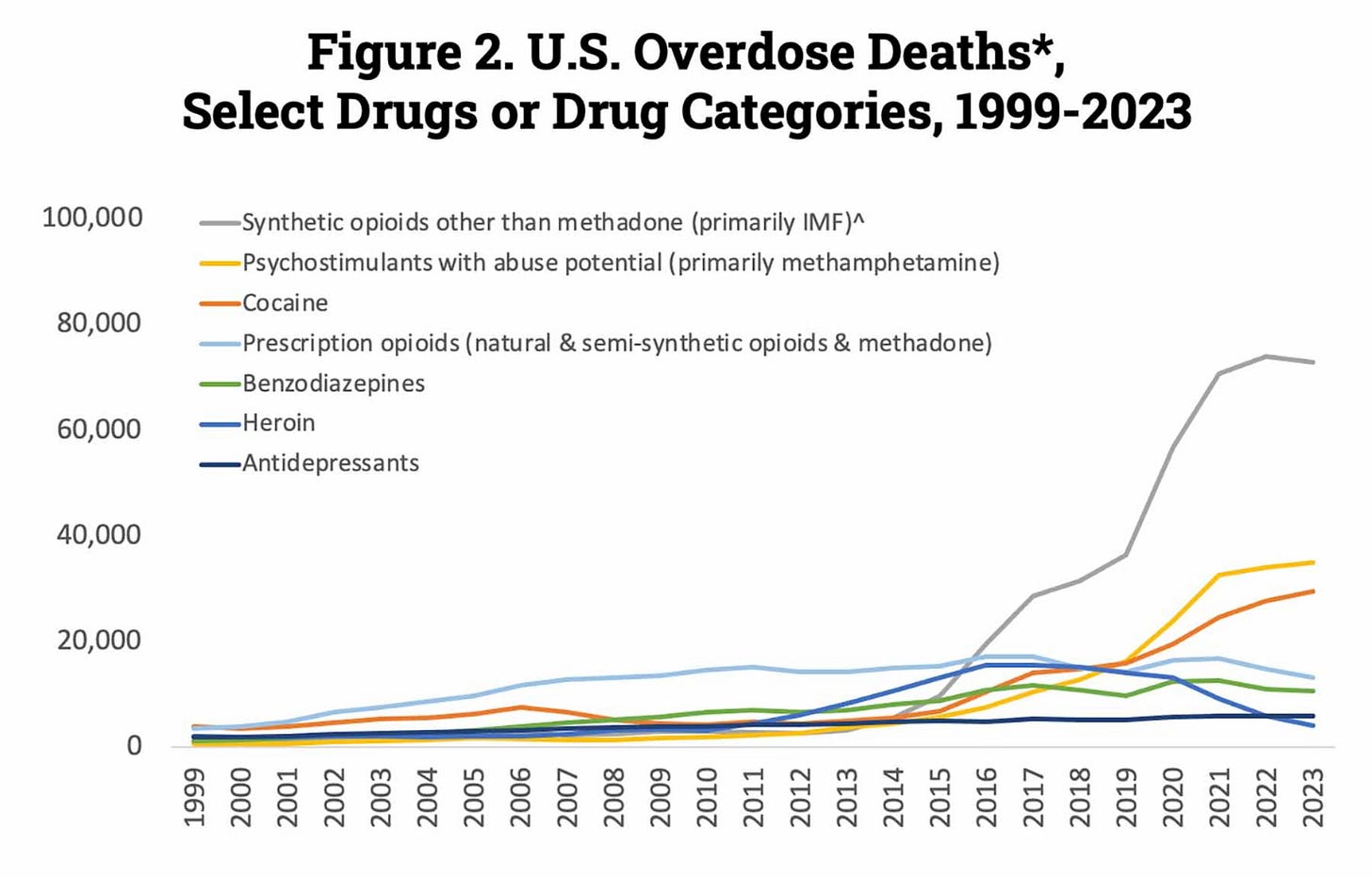
Fascinating mix of elements in this historical "tour d'horizon" of the misnamed war on intoxicating substances, beginning with prohibition and alcohol. It would seem that one through-line connecting the apparent confusion is the implacability of unintended consequences. If we can be certain of one thing, we can be certain that something unexpected will come of it. The US Navy missile strikes against alleged drug-running go-fast boats in the Caribbean and now in the Pacific take this dynamic to the next level. For one, they are entirely for show, to parade our ability to exercise vigilante justice remotely without conditions or any need to explain. (If you want to deal with a mosquito problem, it's generally not cost-effective to focus on individual mosquitoes). I wonder what kinds of unintended consequences will flow from these actions. They may serve as a model for others to follow elsewhere or a reason for other countries in our (supposed) sphere of influence to bandwagon against us. Or something even better that I haven't thought of.